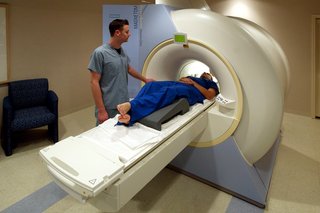
Diagnosed with SMM, SPB, or MGUS?
Learn how you can stall the development of full-blown Multiple Myeloma with evidence-based nutritional and supplementation therapies.
Click the orange button to the right to learn more.
- You are here:
- Home »
- Blog »
- Pre-Myeloma »
- Solitary Plasmacytoma of Bone- Q & A
Solitary Plasmacytoma of Bone- Q & A

“”Solitary plasmacytoma (SP) is an early-stage plasma cell malignancy that is in between monoclonal gammopathy of undetermined significance (MGUS) and multiple myeloma (MM) along the spectrum of plasma cell disorders.”
Hi my name is Karen. I came across your website when researching Multiple Myeloma. My older sister was diagnosed with a solitary plasmacytoma of bone in her sacrum. No M-spike or bone marrow plasma cell involvement. Is there anything she can do do prevent from progressing to MGUS, SMM or MM? Thank you
Hi Karen-
Consider local radiation to the area to zap the lesion. I’m guessing that surgery is out. Be careful about the dose of radiation. I too had local radiation to my sacrum and developed serious nerve damage as a result.
The next step involves figuring out your sister’s risk of MM (low, intermediate, high). If your sister is not exhibiting any plasma cells in her bone marrow and she has no m-spike that is a pretty good sign that she is low risk of progression.
Do you know your sister’s immunoglobulins (IgG, IgA, IgM, etc) and her freelight chains (kappa, lambda and K/L ratio)?
Recommended Reading:
Solitary Plasmacytoma of Bone
“Solitary plasmacytoma (SP) is an early-stage plasma cell malignancy that is in between monoclonal gammopathy of undetermined significance (MGUS) and multiple myeloma (MM) along the spectrum of plasma cell disorders. [1] A plasmacytoma is a discrete, solitary mass of neoplastic monoclonal plasma cells. SPs can be divided into 2 groups according to location:
-
Solitary bone plasmacytoma (SBP) – These occur most commonly in the vertebrae
-
Extramedullary plasmacytoma (EMP) – These encompass all nonosseus SPs; they can occur in any soft tissue but the upper airway tract, including the sinuses, is the most common site.
For a diagnosis of SP, the International Myeloma Working Group (IMWG) requires all four of the following criteria be met [1] :
-
Biopsy-proven solitary lesion of bone or soft tissue with evidence of clonal plasma cells
-
Normal bone marrow with no evidence of clonal plasma cells
-
Normal skeletal survey and MRI (or CT) of the spine and pelvis, except for the primary solitary lesion
-
Absence of end-organ damage, such as CRAB (hypercalcemia, renal failure, anemia, and osteolytic bone lesions), that can be attributed to a lympho-plasma cell proliferative disorder..”
Comparison of the diagnostic performance and impact on management of 18F-FDG PET/CT and whole-body MRI in multiple myeloma
“This study compared the diagnostic performance and impact on management of 18F-fluorodeoxyglucose positron emission tomography/computed tomography (18F-FDG PET/CT) and whole-body magnetic resonance imaging (WBMRI) in treatment-naive myeloma…
Blinded clinical and imaging data were reviewed by two haematologists in consensus and management recorded following clinical data ± 18F-FDG PET/CT or WBMRI. Bone disease was defined using International Myeloma Working Group (IMWG) criteria and a clinical reference standard. Per-patient sensitivity for lesion detection was established. McNemar test compared management based on clinical assessment ± 18F-FDG PET/CT or WBMRI…
Results-
Sensitivity for bone lesions was 69.6% (32/46) for 18F-FDG PET/CT (54.3% (25/46) for PET component alone) and 91.3% (42/46) for WBMRI. 27/46 (58.7%) of cases were concordant.
In 19/46 patients (41.3%) WBMRI detected more focal bone lesions than 18F-FDG PET/CT. Based on clinical data alone, 32/46 (69.6%) patients would have been treated. Addition of 18F-FDG PET/CT to clinical data increased this to 40/46 (87.0%) patients (p = 0.02); and WBMRI to clinical data to 43/46 (93.5%) patients (p = 0.002).
The difference in treatment decisions was not statistically significant between 18F-FDG PET/CT and WBMRI (p = 0.08)…
Conclusion
Compared to 18F-FDG PET/CT, WBMRI had a higher per patient sensitivity for bone disease.
However, treatment decisions were not statistically different and either modality would be appropriate in initial staging, depending on local availability and expertise…
A small number of studies, with limited sample sizes, have compared the diagnostic accuracy of 18F-FDG PET/CT and WBMRI in myeloma [2,3,4,5], but to date, there has been a lack of comparative data of the impact on management of 18F-FDG PET/CT and WBMRI.
Both techniques have advantages. While WBMRI has superior sensitivity for diffuse bone marrow infiltration [6], 18F-FDG PET/CT better demonstrates lesion viability following treatment [7];
both convey prognostic information [8, 9].
Additionally, in patients with smouldering myeloma, the presence of >1 focal bone lesion detected by WBMRI [10] or the presence of a focal FDG-avid lesion [11] is a strong prognostic factor for progression to myeloma such that they are now recognised as an indication to treat otherwise asymptomatic myeloma [12, 13]…
…We hypothesised that the greater sensitivity of WBMRI for detection of myeloma compared to 18F-FDG PET/CT would alter patient management in a greater proportion of cases. Thus, the primary aim of this study was to compare the diagnostic performance of 18F-FDG PET/CT and WBMRI for bone disease in patients with a new myeloma diagnosis and to assess whether management differed depending on which imaging was performed initially…
18F-FDG PET/CT
There was moderate agreement between the two readers in scoring for the presence/absence of focal CT and PET disease, with a kappa score of 0.44 and 0.47, respectively. Identification of CT disease was discordant in 3/12 patients, where CT positive but FDG-negative lesions were noted by one reader. Identification of FDG-positive disease was also discordant in 3/12 patients.
Whole-body MRI
There was excellent agreement between the two readers in scoring for the presence/absence of focal lesions on a per patient basis (kappa score, 1.00). With respect to the scoring of the number of lesions across the 7 regions, mean ± SD focal lesion score was 7.4 ± 5.7 for Reader 1 and 7.7 ± 5.5 for Reader 2; with an intraclass correlation coefficient of 0.95 [95%CI: 0.84-0.99].
With respect to the presence/absence of bone marrow infiltration, there was good agreement between both readers with a kappa score of 0.74; one patient with a bone marrow infiltration percentage of 90% on biopsy was assigned incorrectly as negative by one reader…
Impact on clinical management
Based on the review of clinical data alone, 32/46 (69.6%) of patients would be treated for myeloma rather than active surveillance, in accordance with institutional treatment protocols. Review of clinical data with 18F-FDG PET/CT resulted in treatment of 40/46 (87.0%) patients, and review of clinical data with WBMRI resulted in treatment of 43/46 (93.5%) patients…
Discussion
Our study confirms that WBMRI detects skeletal disease in a higher number of treatment-naïve patients than 18F-FDG PET/CT and also detects a higher number of lesions per patient with concordance in disease positivity/lesion number in only 59% of patients…


